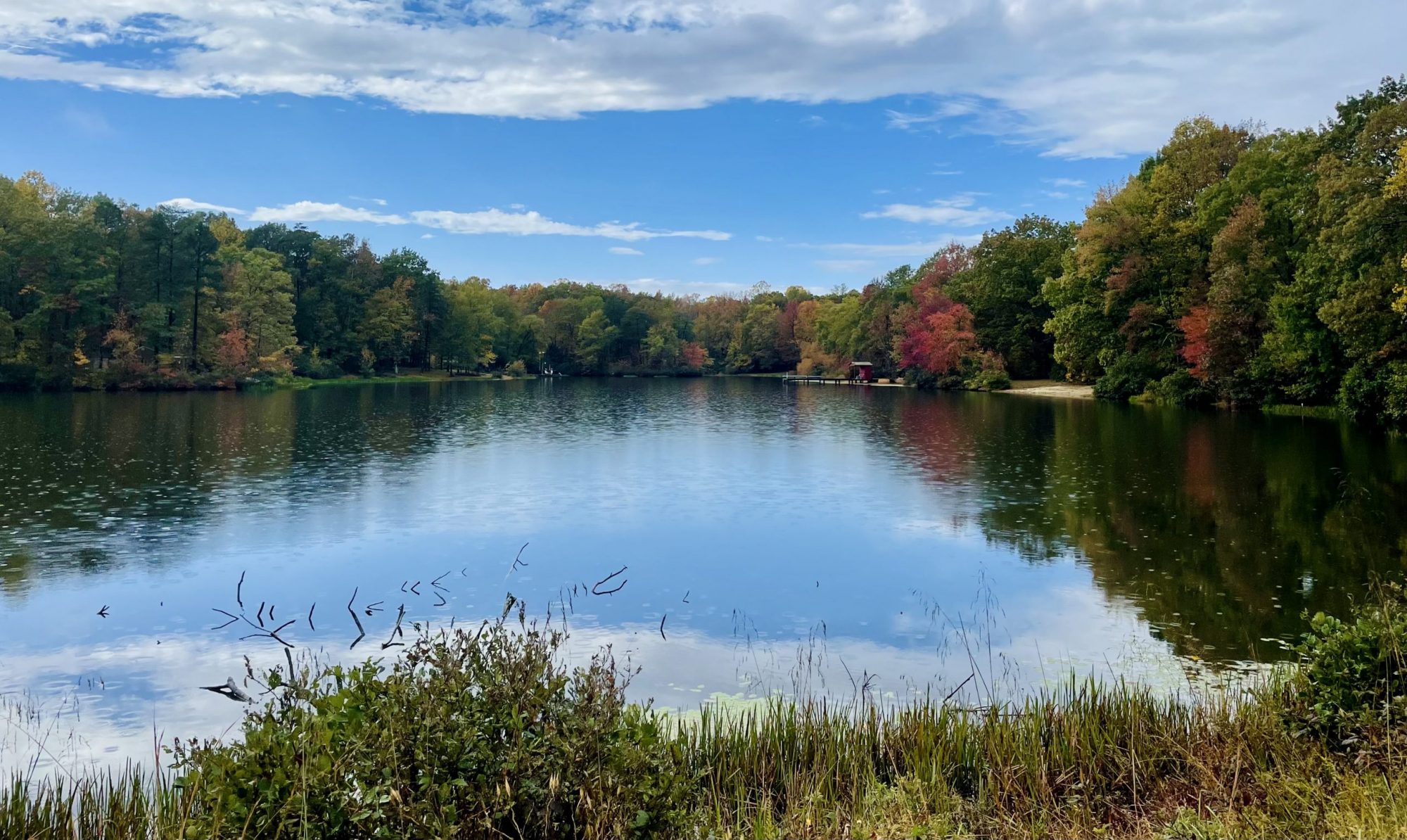As written by Prentiss de Jesus, Lake Resident
In the early 1950s, Continental Can Company – an industrial conglomerate that had a logging concession in the area – leased from Reynolds Development Inc. what is now Orchid Lake. Continental Can harvested trees that were used in building homes in the growing towns of the region. Trees were replanted after selected areas were harvested, so the current trees in and around Orchid Lake are the result of replanting from that time period.
Continental Can stopped leasing the land from Reynolds, and in 1957, Reynolds sold off its holdings. A local resident, C. Hamilton Lacy, considered the land a good investment and purchased the land from Reynolds. Ham (as he was known) was father of Jean Perkins, a current resident at Orchid Lake and former member of the Board of Directors.
In 1958, Ham Lacy and another local resident, Robert McVickers, formed a partnership in an effort to sell the land. Realizing that they would not be able to find a single buyer for the entire acreage, they had the land surveyed and broken into smaller parcels. It occurred to them that if there were some type of recreational facility, say a lake, people would be more inclined to buy. Taking advantage of a natural spring that bubbled to the surface just a few yards from the current Yellow Beach, they dug a 15’ depression with a bulldozer. Rocks were piled up along one side of what was to become the present-day dam. Roads were also built to give access to the lots.
Water from the spring – it is said that there are seven springs in the same general area – and natural drainage from the surrounding banks gradually filled in the lakebed, and soon a recreational facility – Orchid Lake– was born. It is not known who gave the name to the lake, but it is an appropriate one, as in the spring wild orchids, known as Lady Slippers, sprout up all around the area. The first fish were intentionally placed in the lake. These included bream, crappie and sun fish. Later catfish and large mouth bass were added. Today, these species thrive well in the Orchid Lake habitat. In addition, the lake has attracted many species of birds and wildlife including Canadian geese, beavers, snapping turtles, Mallard ducks, blue herons and other water fowl.
To accommodate potential buyers a temporary office was built on New Line Road. Interested buyers were shown available parcels around the lake and could purchase lots on the spot. Typically, a lot would cost $200-$300, and a buyer could take up to a year or more to pay. The original sales office is still in existence and was moved to 206 Fox Road where it was incorporated into a small house and is now the bedroom of the owner.
With the lot owners growing in number the opportunity emerged to form an association. A core group of lot owners met on September 15, 1962 at the home of Melvin Lacy, and drew up the first draft of incorporation and bylaws. This core group included Melvin Lacy, F.S. Cherry, Clyde M. Cockran, Glen Rittenhouse, Margaret Smith, B. E. Culley, and H. K. Arnette.
On November 10, 1962, the first official meeting of the Board of Directors of Orchid Lake Estates, Inc. met to elect officers and to finalize the draft of the Bylaws. For the sake of the meeting B. E. Culley was temporarily elected “Chairman of the Board” and Margaret Smith temporary Secretary. Formal elections were then held, and Clyde M. Cockran was elected President, Melvin Lacym Vice-President and Margaret Smith, Secretary-Treasurer. The Orchid Lake Association was formally on a sound footing.
Orchid Lake Today
The emergence of Orchid Lake as a residential community follows in many ways a pioneer spirit that opened up the West. Although initiated by a financial investment, it gradually became home to a number of people who would choose to live no where else. Lot owners saw Orchid Lake as a unique environmental gem that allows escape frome the rattle and tumble of a chaotic world outside. Here, one can find solace and peace of mind – a place that preserves its commune with nature.
